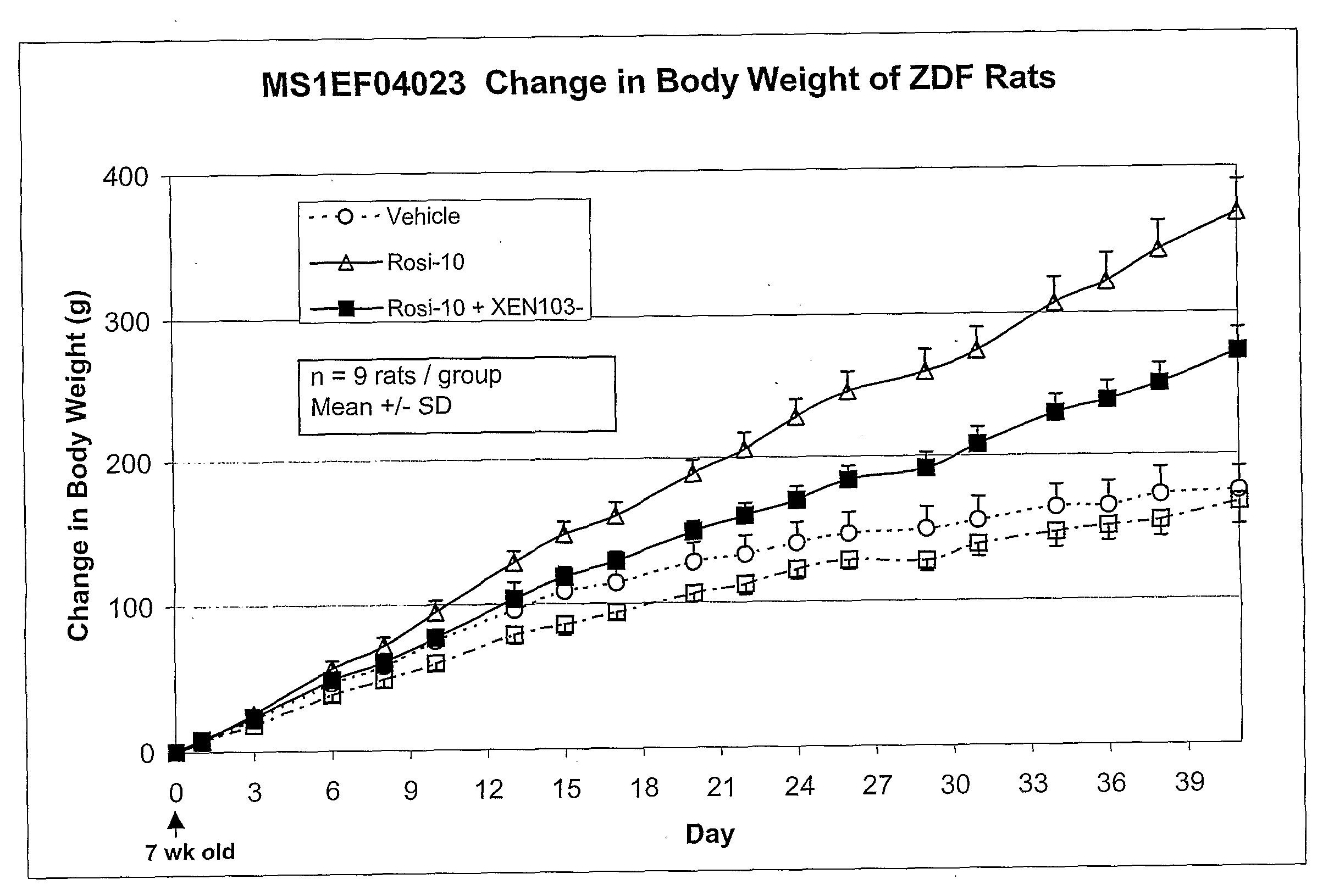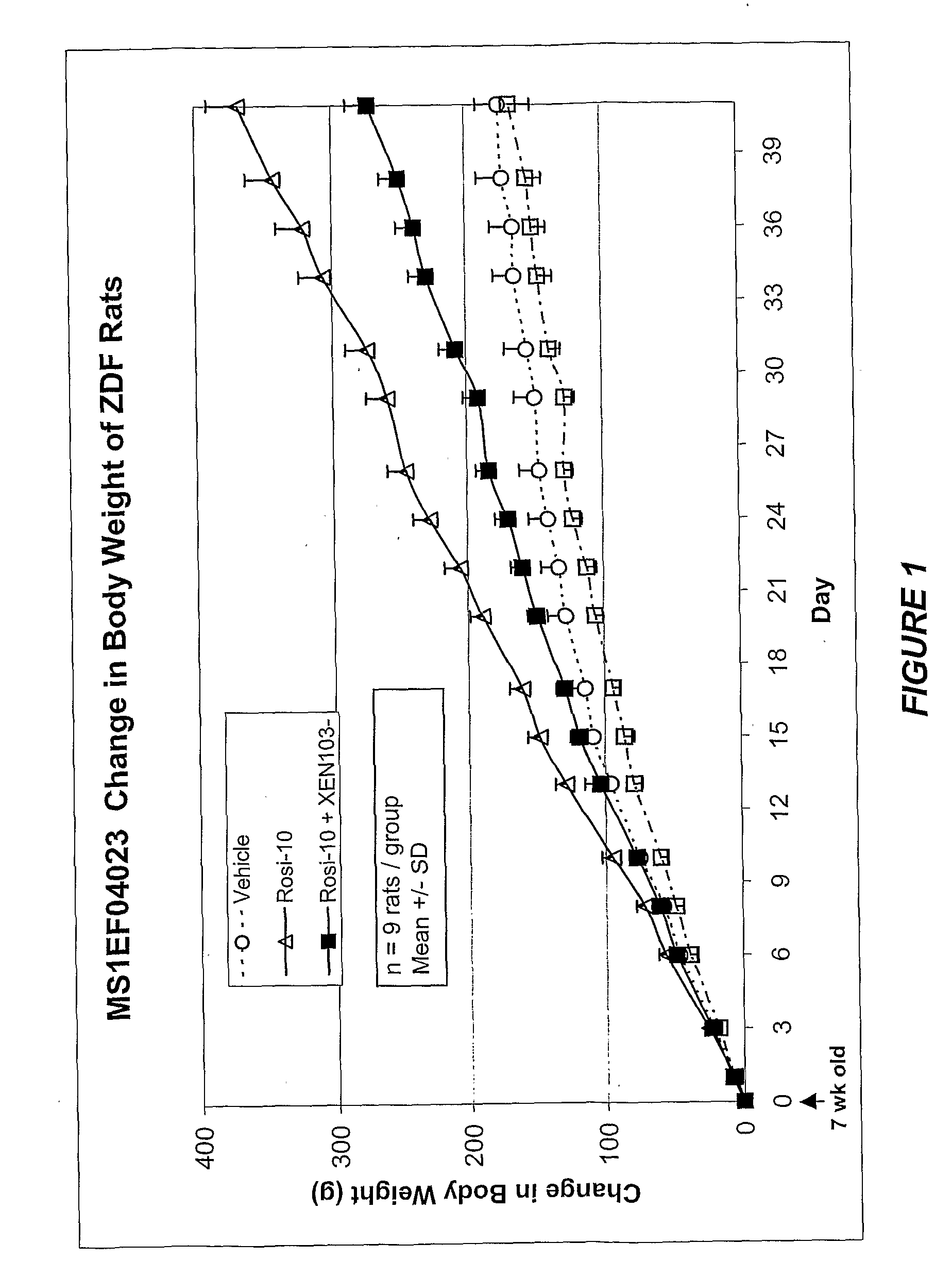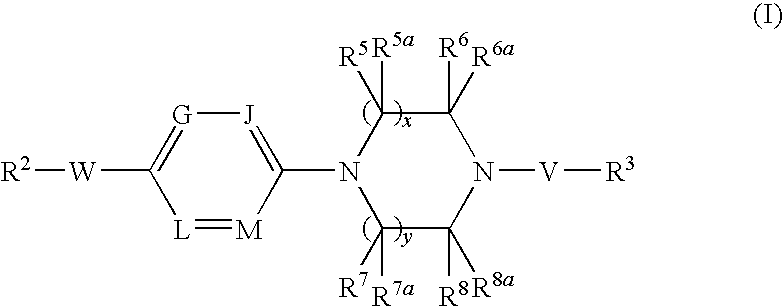Combination therapy
a combination therapy and drug technology, applied in the field of combination therapy, can solve the problems of exacerbate many health problems, increase morbidity and mortality, serious problems, etc., and achieve the effect of reducing the adverse weight gain side effects
- Summary
- Abstract
- Description
- Claims
- Application Information
AI Technical Summary
Benefits of technology
Problems solved by technology
Method used
Image
Examples
example 1
Effect of SCD-1 Inhibitor and Rosiglitazone Co-Administration on Body Weight
[1080]This study was designed to evaluate the effects of using a combination of an SCD-1 inhibitor and rosiglitazone on body weight and in addition, if this combination therapy would prevent the adverse weight gain associated with the rosiglitazone treatment alone.
Method
[1081]Male Zucker Diabetic Fatty Rats (ZDF) began treatment at the age of 7 weeks of age. Animals were housed three to a cage in a temperature, humidity and light controlled room. The animals were fed a standard rodent diet and had free access to water. Animals were randomized into groups of 9 and placed in the following experimental groups for daily dosing (10:30 am) as described in table 5 below. Animals were weighed three times per week. Food intake was recorded three times per week. XEN 1 is a representative SCD-1 inhibitor compound of the invention. The formulations were:[1082]Vehicle=1% CMC:0.1% Tween 20:10% PG[1083]Rosi-10=rosiglitazon...
example 2
[1088]Effect of SCD-1 Inhibitor and Rosiglitazone Co-Administration on Desaturation Index in Rats
[1089]One method of determining efficacy of SCD-1 inhibitors for treatment of adverse weight gain is to directly measure the reduced adverse weight gain. Another suitable method is to indirectly measure the SCD-1 inhibitors impact on inhibition of SCD enzyme by measuring a subject's desaturation index (‘DI’) after administration of the SCD-1 inhibitors. DI as employed in this specification means the ratio of the product over the substrate for the SCD enzyme as measured from a given tissue sample. This may be calculated using three different equations 18:1n−9 / 18:0 (oleic acid over stearic acid); 16:1n−7 / 16:0 (palmitoleic acid over palmitic acid); and / or 16:1n−7+18:1n−7 / 16:0 (measuring all reaction products of 16:0 desaturation over 16:0 substrate). DI is primarily measured in liver or plasma triglycerides, but may also be measured in other selected lipid fractions from a variety of tissue...
PUM
| Property | Measurement | Unit |
|---|---|---|
| temperature | aaaaa | aaaaa |
| temperature | aaaaa | aaaaa |
| temperature | aaaaa | aaaaa |
Abstract
Description
Claims
Application Information
 Login to View More
Login to View More - R&D
- Intellectual Property
- Life Sciences
- Materials
- Tech Scout
- Unparalleled Data Quality
- Higher Quality Content
- 60% Fewer Hallucinations
Browse by: Latest US Patents, China's latest patents, Technical Efficacy Thesaurus, Application Domain, Technology Topic, Popular Technical Reports.
© 2025 PatSnap. All rights reserved.Legal|Privacy policy|Modern Slavery Act Transparency Statement|Sitemap|About US| Contact US: help@patsnap.com



